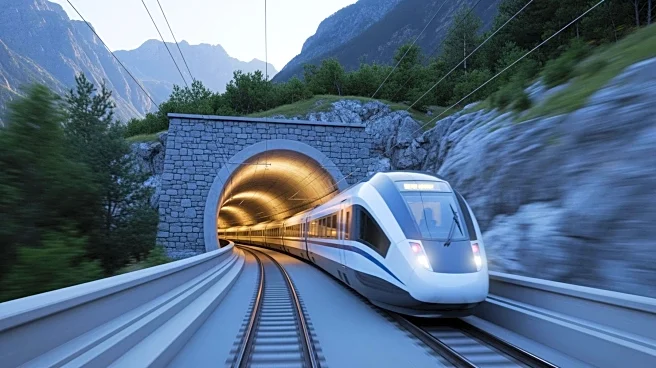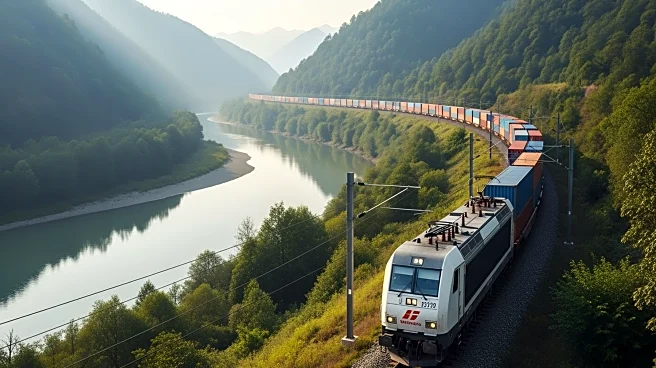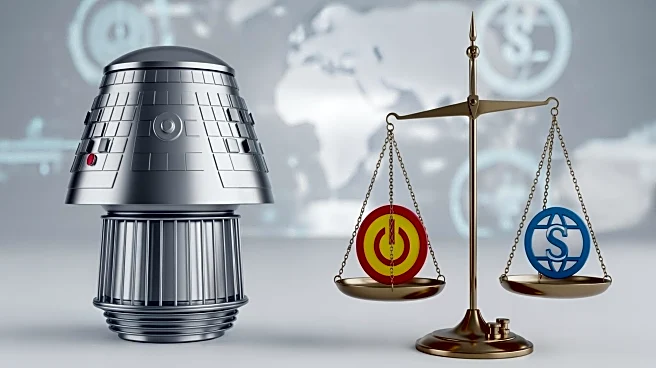What's Happening?
China is constructing a rail-powered trade corridor in its western mountainous interior, centered around Chongqing, to serve as a high-speed alternative to traditional maritime shipping routes. This initiative
aims to bypass strategic chokepoints like the Suez Canal and the Strait of Malacca, which are vulnerable to geopolitical tensions. The rail corridor, part of China's broader Belt and Road Initiative, allows goods to move from Southeast Asia to Europe in under two weeks, significantly reducing shipping times compared to sea freight. The project is a response to vulnerabilities exposed by the COVID-19 pandemic and U.S.-China trade tensions.
Why It's Important?
This development represents a strategic shift in global logistics, potentially reducing China's reliance on maritime routes that are susceptible to geopolitical risks. By investing in inland rail infrastructure, China aims to enhance its trade autonomy and secure supply chains. The corridor could also influence global trade patterns, offering a faster and potentially more reliable alternative to sea transport. However, the reliance on Russian territory for some routes poses risks, especially given geopolitical tensions. The success of this initiative could encourage other countries to explore similar inland trade solutions.
What's Next?
China is likely to continue expanding its rail network, seeking partnerships to streamline logistics and customs processes. The focus will be on enhancing the Middle Corridor, which bypasses Russia, to mitigate geopolitical risks. As the project evolves, it will be important to address challenges such as cost competitiveness and infrastructure development. The initiative's success could lead to increased investment in similar projects globally, reshaping the logistics landscape.












